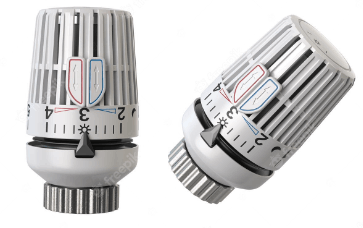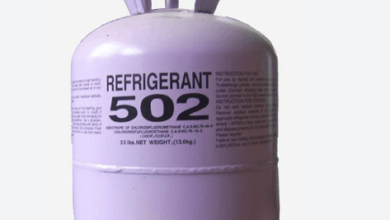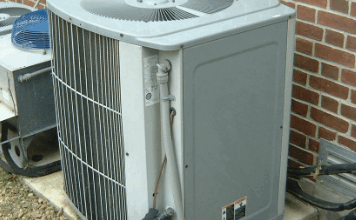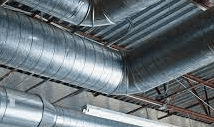Thermostatic Radiator Valve Guide – Pros, Cons and Use
When it comes to HVAC systems, we explain them in the most basic sense. Also to increase the efficiency of the HVAC systems in your home, you can check the other articles about it. One of the systems that increase energy savings is the thermostatic radiator valve application. Here you can find detailed information about thermostatic radiator valve applications.
What is Thermostatic Radiator Valve?

A thermostatic radiator valve is a system that you can install on the different radiators in your home. They will adjust the total hot water coming to your radiators according to the room temperature. Because it is completely automatic, it will make you save lots of energy from it.
Also, the working principle of these valves is very easy. There is a special material inside the valve that contracts or expands with the effect of room temperature. With the expansion or contraction, a small pin regulates the position of the valve to control the fluid flow.
So, if the room temperature increases, the wax or material inside the valve expands and pushed the pin. And the pin closes the valve automatically. And also if the temperature drops, the pin takes the valve and more water comes to the radiator.
As you understand, they are very efficient systems that you can install on your radiators.
Benefits of Thermostatic Radiator Valve
So these applications provide different kinds of benefits to your home.
- As you understand from the working principle that, it regulates the total heat comes into your room. And minimum amount of energy is consumed to heat different rooms.
- You can install them in different rooms if you want to heat the different rooms at different temperatures. The most important advantage of this system is this. If you have a central thermostat, it will adjust the working of the central heating system with one temperature value. And all the rooms are heated with only one temperature value.
- They are very basic systems that you can use. And they are cheap systems that you can install. Eventually, you will make a very good profit from the energy savings and it will pay the system expense for the installation.
- The energy savings will be around 40%.
Common Disadvantages of Thermostatic Radiator Valve
Also, if you are thinking about the installation of thermostatic valve applications, you need to be aware of the general disadvantages.
- If you are using central thermostat control, there can be a conflict between these systems that can cause very bad heating performance.
- Can be affected by external objects, curtains, and furniture in general. You need to be sure that it measures the real temperature of the room.
- In general, the initial costs can be problematic if you are thinking about applying all the radiators. Because they are complex systems can cost higher prices. But eventually, you may compensate for this initial cost with energy saving they bring in one season.
- Not available for every system. As you know that there are different kinds of heating systems available. And these applications are not compatible with all heating systems in general. For example, they do not apply to different types of boilers, and underfloor heating systems in general.
- Calibration requirement. You will see certain numbers on the TRV applications. These numbers do not mean the room temperature. They mean the level of heating according to the heating level of the central heater. So, you will need professional calibration, and adjustment of a certain temperature can be a problem.
- Installation. For the installation of these systems, you will need professional assistance in the installation of these systems in general.
Installation Costs
If you are curious about the installation costs of these systems, we can say some things about them. If you want to install them to multiple radiators, the general cost will be around $30-$40 with the installation and expertise. For example, if you want to install 5 radiators in total, you will need to pay around $150 for total costs.
But as we stated above, it will compensate for the energy savings that bring to your home heating. They are very effective in very cold climates.
Different Types of Thermostatic Radiator Valves
Also, there are different kinds of thermostatic radiator valve systems are available in the market. If you know that these are the common systems, selecting one of them will be very easy for you.
- Standard systems: Actually, we explained the standard systems above. This is the first and the most common type that you can use in heating applications.
- Remote sensor systems: In these systems, there is a remote temperature sensor that provides a more accurate temperature to the TRV system. You just place it in a more accurate place in the room to eliminate faulty temperature readings in general.
- Programmable systems: There are electronic and programmable TRV systems are available. The user can adjust the temperature level from an electronic interface.
- Smart systems: Also you can control the temperature of the environment by using a smartphone. More accurate temperature adjustments are possible with these applications.
- TRV systems with lockshield: The additional lockshield application provides very good tampering protection for the thermostatic radiator valve application.
So, there are different systems are available that built to prevent the downsides that we explained above.
Important Tips about Thermostatic Radiator Valve Systems
While you are using these applications, you need to know the general points. And you can use them much more effective way.
First of all, you should not block the valve with furniture, curtain, or other radiator covers. This will deceive the system and it will not adjust the correct temperature for the room. And also do not place the TRV near cold objects such as a window or other cold systems.
Also, check the valve regularly if it is in the adjusted situation that you need. And it will be very easy for you to adjust the system.
You need to allow air circulation for the correct reading of the temperature. This is a very important thing to consider.
Do not paint the valve if you are painting the exterior of the valve or the walls. This can cause temperature reading problems in general.
Important Considerations to Make While Choosing a TRV System
If you make these kinds of considerations well, you will choose the most appropriate application for the radiator or heater system that you have in your home.
- Type: As we stated above, not all thermostatic radiator valve system is compatible with all heater applications. The heating system and the radiator type may affect the system that you need to choose in general. So, be sure that your system is usable and compatible with the heater systems.
- Temperature range: Also the temperature range is very important. The system that you will install must be compatible with the temperature range that you will use.
- Efficiency: Which efficiency level that they provide for your heating system?
- Accuracy: As you see above, different types of systems provide different types of accuracies. And you need to choose a system that provides a different amount of accuracy. Choose a system that provides a very good amount of accuracy for your system.
- Budget: With the increasing features that thermostatic radiator valve systems provide, the prices of these systems increase. So, you need to know the general budget that you can spend on these systems. And you do not need to spend extra money for the extra features that you do not need and do not use.
Common Problems and Solutions
Also, there can be common problems that you need to deal with. Here you can find the most common problems and solutions.
- Sticking valve: Sticking is a very common problem that you can have in a valve application. Because of the sticking, the valve will not operate correctly. The major cause of this problem is dirt or debris. You need to remove the dirt and debris from the valve system.
- Noises: Once the valve opens and closes automatically, you may hear noises coming from the system. The main cause of the noise is the trapped air inside the valve and the radiator system. Also, loose components and faulty valves can cause this issue.
- Leaks: Also is a very common problem that you may face. If you see water leaks from the valve, it is because of the damaged valve application. Replacement of the seals or the valve itself can solve this problem.
- Incorrect temperature sensing: The accuracy of the sensor is very important. You need to make the calibration well. And also you need to place the valve in an appropriate place.
- Compatibility: Various kinds of problems may arise because of the incompatible valve application in your system. So, it is very important to deal with the compatibility of the valve application.
- Size: Also the valve size can be incompatible with the system. And it will not work effectively.
If you need to change the thermostatic radiator valve application, we recommend you call an expert. Because it may require special tools and expertise to deal with this system.
Conclusion
As you see above, these are the general considerations that we can make about the TRV applications. With the information here, you can take different actions that you need.
So you can leave your comments and questions about the TRV applications below.
Your precious feedbacks are very important to us!
Related contents about HVAC;
Stop and Waste Valve – All Things to Know!
Drain Valve – What is It? Important Things to Know
Air Compressor Check Valve – Guide with All Info You Need
Capped Valve- A Useful Solution to Fluid Flow Systems
Car Seal Guide – How to Use? What Does it Mean?
Heater Control Valve – What is It? How it Works?
Idle Control Valve – Everything You Need to Know!
Exhaust Valve – Problems, Types and Solutions
SharkBite Shut Off Valve – Detailed and Unbiased Review
Pressure Washer Unloader Valve – All the Points You Need to Know



